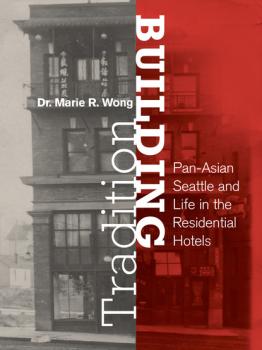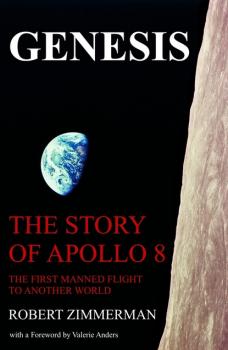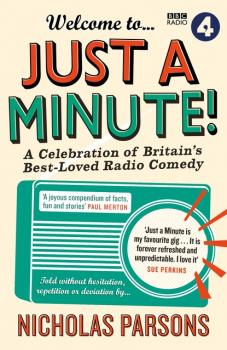ТОП просматриваемых книг сайта:
Техническая литература
Различные книги в жанре Техническая литература, доступные для чтения и скачиванияАннотация
More than any other city-region in the world, including metropolises like New York, Los Angeles and London, Greater Toronto has become a testing ground for urban hyper-diversity. Almost half the region’s 6 million residents were born outside Canada, and many more come from First Nations and racialized communities. Yet recent research has shown that Toronto, like many large cities, is turning into a sprawling collection of homogenous enclaves.Toronto is in many ways ahead of the curve as far as urban diversity goes, By situating Toronto in a broader context and then using it as a kind of case study for the future of urban diversity, we're aiming to make the collection relevant well beyond this city. In a recent article in Toronto Life, 'The Skin I'm In,' writer Desmond Cole described his experiences being carded in Toronto, which prompted discussion of carding practices in the city. It received widespread attention and was picked up by NPR in the US. A book by Cole on race in Canada is forthcoming from Doubleday Canada in 2017; Subdivided will complement this work by presenting other voices on this topic.
Аннотация
From the 1870s to the 1950s, waves of immigrants to Toronto – Irish, Jewish, Chinese and Italian, among others – landed in ‘The Ward’ in the centre of downtown. Deemed a slum, the area was crammed with derelict housing and ‘ethnic’ businesses; it was razed in the 1950s to make way for a grand civic plaza and modern city hall. Archival photos and contributions from a wide variety of voices finally tell the story of this complex neighbourhood and the lessons it offers about immigration and poverty in big cities. Contributors include historians, politicians, architects and descendents of Ward res­idents on subjects such as playgrounds, tuberculosis, bootlegging and Chinese laundries.With essays by Howard Akler, Denise Balkissoon, Steve Bulger, Jim Burant, Arlene Chan, Alina Chatterjee, Cathy Crowe, Richard Dennis, Ruth Frager, Richard Harris, Gaetan Heroux, Edward Keenan, Bruce Kidd, Mark Kingwell, Jack Lipinsky, John Lorinc, Shawn Micallef, Howard Moscoe, Laurie Monsebraaten, Terry Murray, Ratna Omidvar, Stephen Otto, Vincenzo Pietropaolo, Michael Posner, Michael Redhill, Victor Russell, Ellen Scheinberg, Sandra Shaul, Myer Siemiatycki, Mariana Valverde, Thelma Wheatley, Kristyn Wong­-Tam and Paul Yee, among others.
Аннотация
Since the election of Mayor David Miller in November 2003, Toronto has experienced a wave of civic pride and enthusiasm not felt in decades. At long last, Torontonians see their city as a place of possibility and potential. Visions of a truly workable, liveable and world-class city are once again dancing in citizens’ heads. In the past two years, this spirit has, directly or indirectly, manifested itself in multifarious forms: in writer Sheila Heti’s sui generis lecture series, Trampoline Hall; in the transformation of derelict hotels such as the Drake and the Gladstone into cultural hotspots; in renewed interest in waterfront revitalization and public transportation; in exciting, controversial architectural developments such as the OCAD building, the expansion of the ROM and the AGO; in the [murmur] project, which catalogues stories about Toronto neighbourhoods and broadcasts them to people’s cell phones; in the explosion of the local independent music scene. uTOpia aims to capture and chronicle that spirit, collecting writing by many of the people inspired by and involved in these projects. Featuring passionate, visionary essays by thirty-four different journalists, artists, thinkers, architects and activists, uTOpia is a compendium of ideas, opinions and strategies. The anthology explores plans to redevelop the Island airport into a Ward’s Island-style community; how the Zeidler family is energizing artist-run centres; what a car-free Kensington Market might mean; the necessity and beauty of laneway housing; the way past efforts to combat devastating developments like the Spadina Expressway have shaped current activism; what a utopian Toronto might look like mapped out; and much, much more. Playful, erudite and accessible, uTOpia writes Toronto as it is shared and created by the people who live here. Though it is by no means a complete picture of what is happening in the city right now, it will hopefully show that what was once just a T-shirt slogan – I Heart T.O. – is now genuine, heartfelt sentiment. Contributors include Howard Akler, Andrew Alfred-Duggan, Jacob Allderdice, Bert Archer, James Bow, Nicole Cohen, Jonny Dovercourt, Dale Duncan, Philip Evans, Mark Fram, Misha Glouberman, Chris Hardwicke, Sheila Heti, Alfred Holden, Luis Jacob, Lorraine Johnson, Edward Keenan, Mark Kingwell, John Lorinc, Sally McKay, Heather McLean, Dave Meslin, Shawn Micallef, Derek Murr, Ninjalicious, Darren O’Donnell, Planning Action, Barbara Rahder, Dylan Reid, Erik Rutherford, Jeffrey Stinson, Deanne Taylor, Conan Tobias, Stéphanie Verge, Adam Vaughan and Marlena Zuber.
Аннотация
More trees. Hydrogen-fuelled cabs. Urbiology. A new model of taxation. Solar panels on big-box stores. The art of salvage. Composters for dog poo in city parks. Retrofitting our urban slabs. Gardening the Gardiner. Ravine City. What would make Toronto a greener place? In the third volume of the uTOpia series, dozens of imaginative Torontonians think big and small about sustainability. From suggestions for changes to our transit system and more mixed-use neighbourhoods to a tongue-in-cheek proposal for a painted line aroudn the city and a short comic book about Toronto in the year 2057, GreenTOpia challenges the city and its residents to rethink what it means to be green in a metropolis, and how to take their love of the city one green step further. Other pieces include an interview with Mayor David Miller and a breakdown of the ecological impact of our morning coffee. GreenTOpia features photos, maps and a 56 page green directory of resources, organizations, incentives and programs promoting sustainability in the GTA.
Аннотация
Plant and cocktail lover C.L. Fornari shows how easy it is to create a garden atmosphere that sets the mood for private relaxation or festive occasions. With a wise and witty text, mood-setting plant lists, botanical drink recipes and luscious photographs, The Cocktail Hour Garden reveals the simple secrets to creating an evening pleasure garden.
Аннотация
Fresh, multicultural, interdisciplinary perspective to understanding Asian American history and urbanism.
– Provides crucial primary research in an underexplored area; Wong wrote this because she needs a resource to teach from, and knows many other professors, community organizations, and Asian Americans also feeling the lack of this book.
– Cities across the country are facing housing crises and are eager for case studies of alternative housing models and policy impacts on distinct and/or marginalized communities.
– Wong's previous book, also on a Chinatown, has gone into second printing; this title is about a bigger community in a bigger, higher-profile city, so we have high hopes for sales.
– Twenty-four original maps show the pattern of settlement, with 65 photographs illustrating the lived experience of those shifts. We plan on a gorgeous, innovative visual layout to break the academic monograph mold and couch the research in an art object.
– Hard to find comparable titles because the books that come closest to the subject matter are academic titles priced $5-20 higher, or are clipped down to tourist-oriented guidebooks.
– Provides crucial primary research in an underexplored area; Wong wrote this because she needs a resource to teach from, and knows many other professors, community organizations, and Asian Americans also feeling the lack of this book.
– Cities across the country are facing housing crises and are eager for case studies of alternative housing models and policy impacts on distinct and/or marginalized communities.
– Wong's previous book, also on a Chinatown, has gone into second printing; this title is about a bigger community in a bigger, higher-profile city, so we have high hopes for sales.
– Twenty-four original maps show the pattern of settlement, with 65 photographs illustrating the lived experience of those shifts. We plan on a gorgeous, innovative visual layout to break the academic monograph mold and couch the research in an art object.
– Hard to find comparable titles because the books that come closest to the subject matter are academic titles priced $5-20 higher, or are clipped down to tourist-oriented guidebooks.
Аннотация
Товарный менеджмент и экспертиза строительных товаров - Франц Петрище
Учебные издания для бакалавровАннотация
В учебнике рассмотрены основные понятия, ассортимент, классификация, потребительские свойства, дефекты, влияющие на качество строительных товаров, а также маркировка, упаковка, транспортирование и хранение строительных товаров. Описываются методы оценки их качества и проведения экспертизы. Для студентов бакалавриата и магистратуры, обучающихся по направлению подготовки «Товароведение», практических работников производственных и торговых организаций, а также контрольных органов.
Информация о книге
Автор произведения Франц Петрище
Аннотация
It was Christmas Eve 1968. And the astronauts of Apollo 8 – Commander Frank Borman, Jim Lovell, and Bill Anders – were participants in a mission that took them faster (24,000 mph) and farther from the earth (240,000 miles) than any human had ever traveled. Apollo 8 was the mission that broke humanity's absolute bond to the earth: it was the first manned vehicle to leave the earth's orbit. Confined within a tiny spaceship, the astronauts were aided in their journey by a computer less powerful than one of today's handheld calculators. Their mission was not only a triumph of engineering, but also an enduring moment in history. The words these three men spoke from lunar orbit reverberated through American society, changing our culture in ways no one predicted.
Аннотация
'A joyous compendium of facts, fun and stories. This hilarious and informative guide is destined to become the companion to radio's most enduring panel game' PAUL MERTON
In this first ever official companion, chairman Nicholas Parsons tells the fascinating story of the much-loved panel game and Graham Norton, Sue Perkins, Jenny Eclair and Gyles Brandreth share their memories of the show.
Over the decades, the greats of British comedy have entertained Just a Minute listeners with performances that have come to define our comic heritage – from Kenneth Williams' outrageously funny 'battles' with Sheila Hancock, Clement Freud's acerbic wit and Derek Nimmo's tall tales to Paul Merton's imaginative flights of fancy, Julian Clary's flagrant innuendos and Pam Ayres' poetic humour. Welcome to Just a Minute! is an entertaining journey through British comedy history and a master class in comic timing, verbal dexterity and sharp one-liners.
In this first ever official companion, chairman Nicholas Parsons tells the fascinating story of the much-loved panel game and Graham Norton, Sue Perkins, Jenny Eclair and Gyles Brandreth share their memories of the show.
Over the decades, the greats of British comedy have entertained Just a Minute listeners with performances that have come to define our comic heritage – from Kenneth Williams' outrageously funny 'battles' with Sheila Hancock, Clement Freud's acerbic wit and Derek Nimmo's tall tales to Paul Merton's imaginative flights of fancy, Julian Clary's flagrant innuendos and Pam Ayres' poetic humour. Welcome to Just a Minute! is an entertaining journey through British comedy history and a master class in comic timing, verbal dexterity and sharp one-liners.










